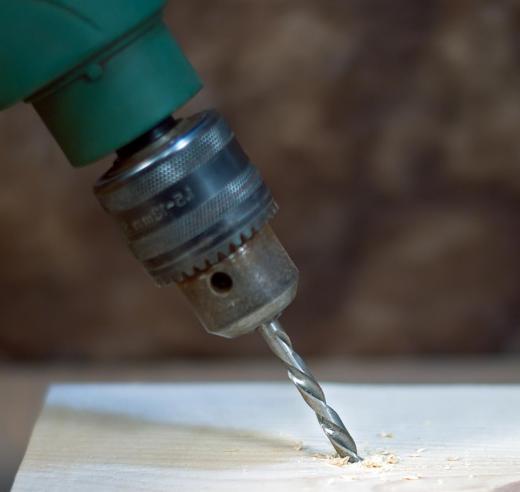A pneumatic drill is a type of large, handheld, air-powered drill used to break up or dig into hard surfaces, such as concrete. Also called jackhammers, pneumatic drills are used primarily for construction and rescue work. As the term "pneumatic" suggests, these drills rely on air pressure, provided to them by diesel-powered air compressors, to move their drill bits up and down. Pneumatic drills often require training to use and should only be used by professionals.
A pneumatic drill is made up of the outer casing, a handle, thick hoses that connect the drill to the air compressor, and a drill bit, which begins inside the casing and can be changed depending on the job. Also inside the casing are a simple network of tubes, a valve, and a pile driver. The pressurized air is pumped through the hoses into the drill's interior tubes. The pile driver, a heavy metal rod, raises or falls depending on the air pressure going into the tube, repeatedly hitting the drill bit and forcing it into the ground. The flow of air is controlled by the valve, which alternately blocks one of two tubes, depending on its position.

The process begins when the drill operator presses down on the handle. This allows the highly pressurized air from the compressor to be pushed into the drill. That high pressure shoves the pile driver down its tube, hitting the drill bit, which is then forced into the ground. The impact of the drill, combined with the vibrations created by two hard surfaces meeting with force, causes the valve to switch positions, blocking the other tube and moving the air in a different direction. The air then forces the pile driver back up, which causes the valve to switch positions again, and the process repeats.
Pneumatic drills are extremely efficient. A sledgehammer may hit the ground five or ten times every minute, but a pneumatic drill bit can hit the ground 25 times a second. At 1,500 hits each minute, pneumatic drills create a force that allows their operators to break up large chunks of concrete in seconds.
For this reason, pneumatic drills are also very noisy, and operators must wear hearing protection. Additionally, the severity of the vibrations require a tight grip and strength to control the hammer. Too much time working with a pneumatic drill can cause carpal tunnel or negatively affect arm circulation.
